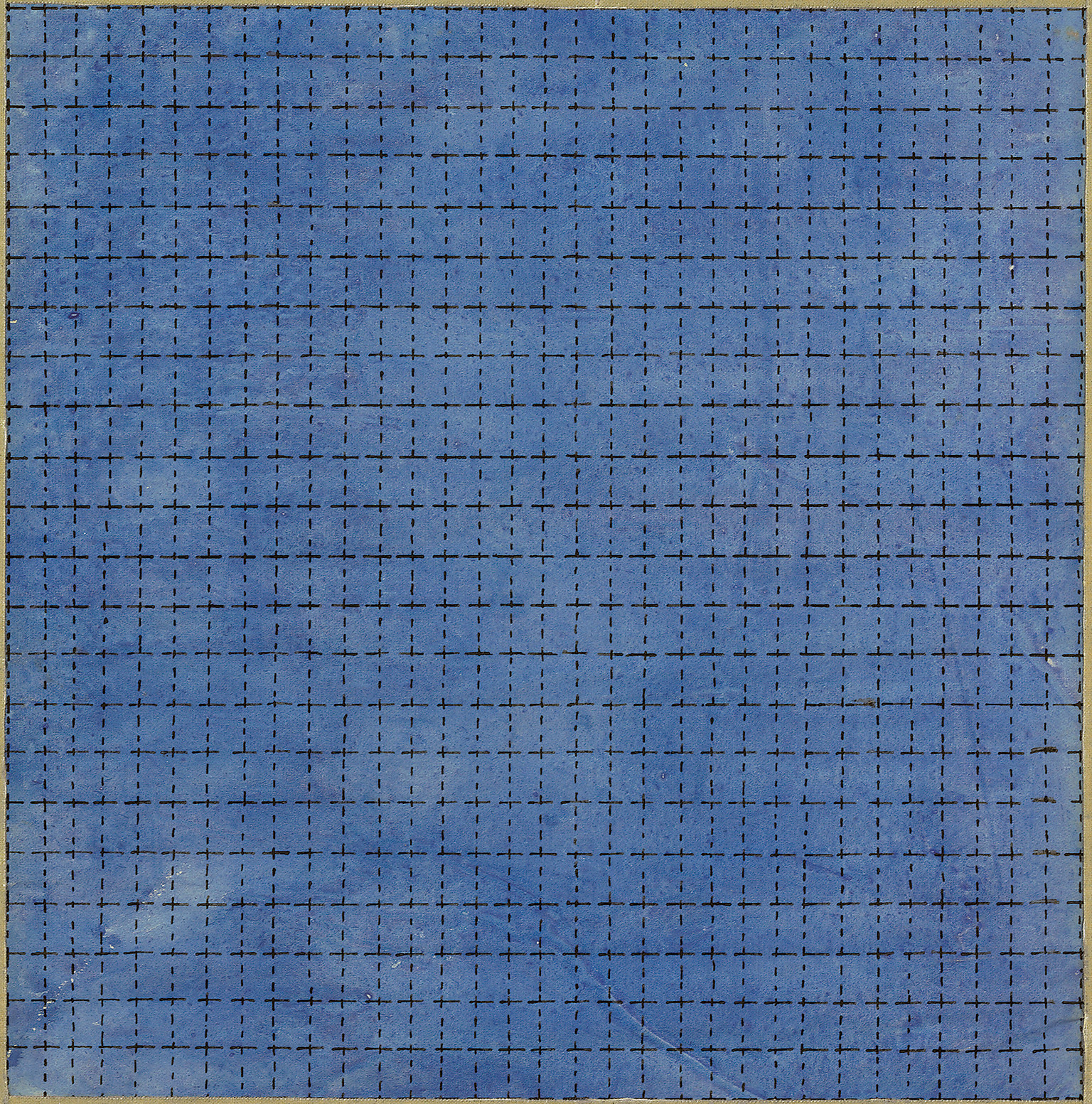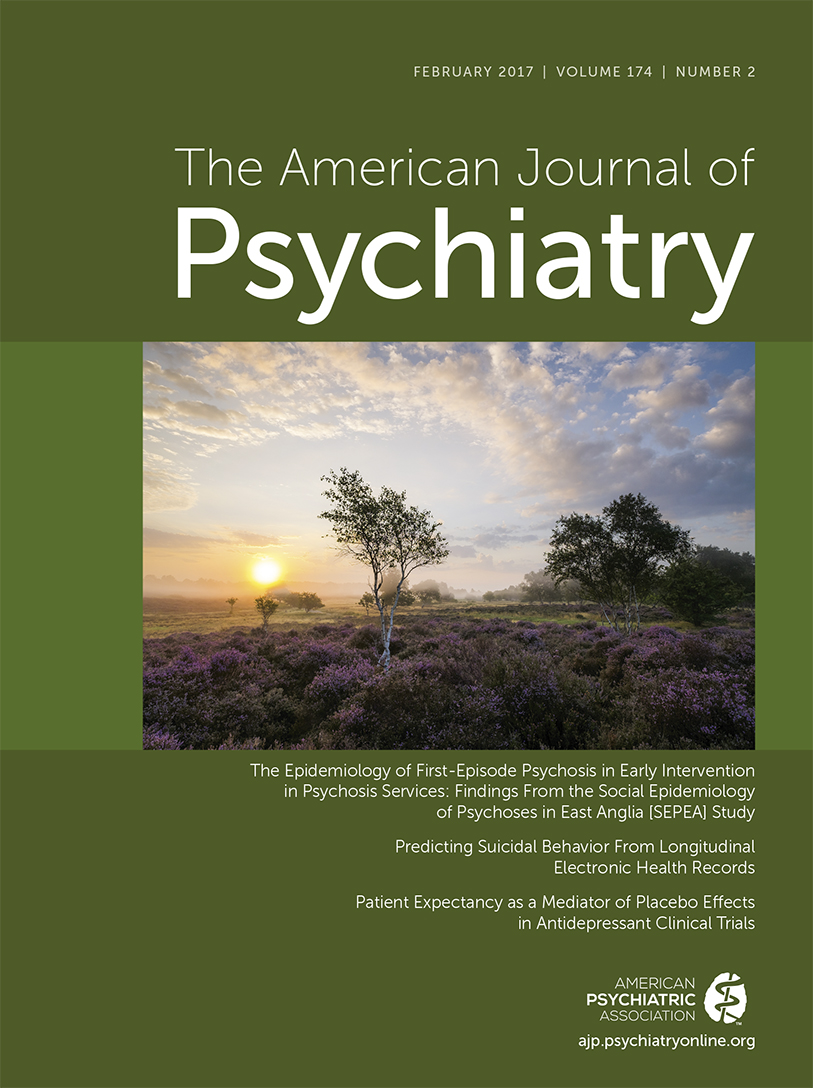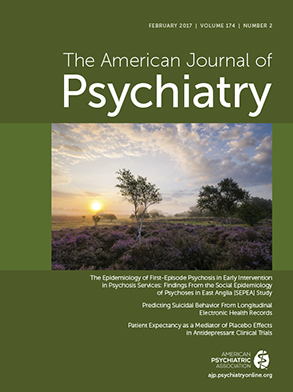Agnes Martin is recognized as one of the greatest practitioners of late 20th century abstract art.
However, she eschewed such a categorization and declaimed, “I would like my work to be recognized as being in the classic tradition (Coptic, Egyptian, Greek, Chinese) as representing the ideal in the mind” (
1, p. 37).
Her biographer, Princenthal, observed, “Composed of the simplest elements, including ruled penciled lines and a narrow range of forms—grids, stripes, and very occasionally, circles, triangles or squares, they reveal an esthetic sense that is the equivalent of perfect pitch” (
2, p. 7).
Martin averred that her paintings came to her as “visions” complete in every detail. She suffered throughout her adult life from a recurrent fulminant psychotic illness that sometimes landed her in the hospital. Martin referred to her psychotic episodes as “trances.” She related to a friend, “I was in a perfect small church on Second Avenue in New York at Christmas time and hearing the Messiah. After three notes, I zonked out—in a trance—I’ve been in many trances, you know. That’s how they put me away in Bellevue” (
3, p. 103). The psychiatrist who treated her from 1985 to 2000 commented on “the depth of sensitivity with which she was able to make art in the face of a disorder that for many people would be devastating” (
3, p. 159).
Martin was born on the prairies of Saskatchewan. “My grandparents on both sides came from Scotland and they went on to the prairie in covered wagons—my parents were also pioneers” (
4, p. 1). Her father died when she was 2 years old, and her family moved to Vancouver. As a teenager she was a talented competitive swimmer and invited participant in Olympic trials. Moving to Washington state as a young adult, she obtained a teaching certificate and worked in various rural schools. In 1941 she left for New York City, where she enrolled at Columbia’s Teachers College and took courses in studio art. In the late 1940s she moved to New Mexico and began painting.
Martin returned to New York City in 1957 and became a member of an artistic community that included Jasper Johns, Elsworth Kelly, and Robert Rauschenberg at Coentes Slip, a waterfront district in lower Manhattan, where she obtained a studio. This was an extremely influential and mutually supportive group of artists that was initiating a new wave of both abstraction and minimalism. By 1964, Martin had developed her characteristic “grid” paintings (see image). Simultaneously, Martin became fascinated by Zen Buddhism and mystical experience, in particular written accounts of the “visions” of St. Theresa of Avilla. In 1967, following another acute psychotic episode, she left New York. Later she stated, “I left New York in 1967 because every day I suddenly felt I wanted to die and it was connected to painting” (
2, p. 147).
For over a year, Martin led a lonely peripatetic life in the Pacific Northwest. She finally settled again in New Mexico on a remote isolated mesa, where she built a studio. She resumed painting, and her considerable output from this period is regarded as her most significant. She lived the rest of her life in New Mexico and died there at age 92.
An eloquent writer, Martin gave voice to her artistic credo in a poetic piece (
5, p. 13) titled “The Untroubled Mind”:
People think that painting is about color. It’s mostly composition.
It’s composition that’s the whole thing. The classic image—
Two late Tang dishes, one with a flower image one empty—the empty form goes all the way to heaven. It is the classic form—lighter weight.


